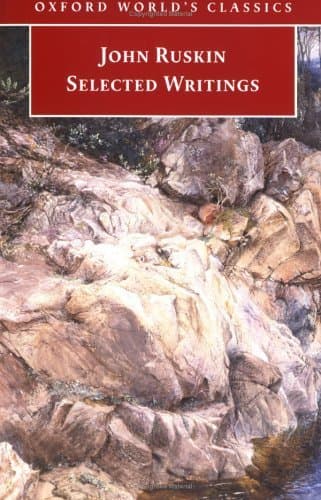
Book Review Summary: Selected Writings
Introduction
"Selected Writings" by John Ruskin is a collection of the renowned Victorian art critic and social commentator's extensive body of work. Spanning from the early 1840s to the late 1880s, this new edition includes a wide range of extracts from Ruskin's major works, such as "Modern Painters," "The Stones of Venice," and "Sesame and Lilies." The book also features less familiar writing on science and myth, offering readers a comprehensive overview of Ruskin's diverse interests and insights. With an authoritative introduction that outlines Ruskin's life and thought, this new edition provides readers with a deeper understanding of his enduring relevance.
About John Ruskin
John Ruskin, born in 1819, was an influential English writer and critic who shaped Victorian artistic taste through his books. He published "Modern Painters" (1843-1860) and "The Stones of Venice" (1851-1853), which established his reputation as a prominent art critic. Ruskin's writing covered a wide range of topics, including art, architecture, politics, history, myth, and science. He was known for his clarity of vision, unsettling intensity, and ability to make complex ideas accessible to a broad audience.
Analysis of Views
- Eloquent Writing: Readers praise Ruskin's eloquent and beautiful writing style, which masterfully combines literary prose with visual descriptions. They find his writing informative and enjoyable to read.
- Thought-provoking: Ruskin's writing challenges conventional views and encourages readers to question established ideas. His insights on art, architecture, botany, and the environment spark critical thinking and provoke reflection.
- Diverse Topics: The book covers a wide range of topics, from art and architecture to science and mythology. Readers appreciate the breadth of Ruskin's knowledge and the depth of his exploration into various fields of study.
- Informative Illustrations: Ruskin's own illustrations accompany the text, enhancing the reading experience and providing visual context for his ideas. The illustrations are considered an integral part of the book and add depth to the overall presentation.
- Influence on Victorian Art: Ruskin's influence on Victorian art cannot be overstated. His writings influenced artists, architects, and designers during the time period, shaping the direction of artistic movements such as the Pre-Raphaelites. Readers appreciate the historical significance of his work and its lasting impact on the art world.
Reasons for Recommendation
- Clarity of Vision: Ruskin's writing is characterized by a clarity of vision that remains relevant today. Readers find his insights on art, architecture, and society to be thought-provoking and applicable to contemporary issues.
- Diverse Topics: The book covers a wide range of topics, offering readers a comprehensive understanding of Ruskin's interests and ideas. The inclusion of less familiar writing on science and myth adds depth to the collection and broadens readers' perspectives.
- Beautiful Writing Style: Ruskin's eloquent and beautiful writing style makes the book enjoyable to read. Readers appreciate the literary quality of his prose and find it engaging from beginning to end.
Reasons for Not Recommendation
- Lack of Context: Some readers feel that the book lacks sufficient context for those unfamiliar with Ruskin's works or his historical context. They suggest that an introduction or guide to his life and thought would enhance the reading experience.
- Repetition: A few readers mention that Ruskin repeats himself throughout the book, which can become tedious for some readers. They suggest that the repetition may detract from the overall coherence of the collection.
Conclusion
"Selected Writings" by John Ruskin offers readers a comprehensive overview of this influential Victorian art critic and social commentator's diverse interests and insights. With its wide range of topics, beautiful writing style, and informative illustrations, the book provides a valuable resource for those seeking to explore Ruskin's ideas on art, architecture, politics, history, mythology, and more. While some readers find repetition and lack of context challenging, overall, the book is highly recommended for its thought-provoking content and enduring relevance.